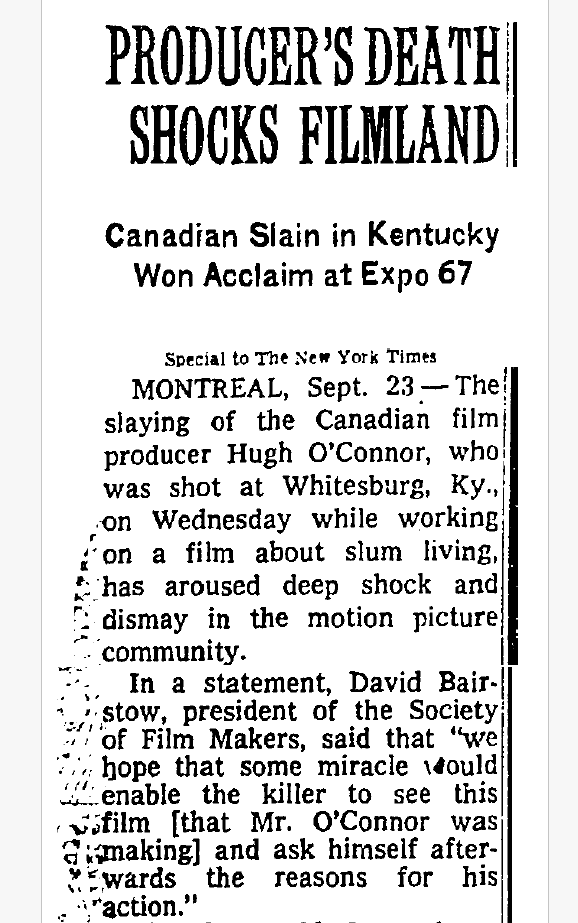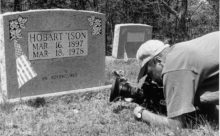New York Times 1967 story on the murder of Hugh O'Connor
PRODUCER’S DEATH SHOCKS FILMLAND

Canadian Slain in Kentucky Won Acclaim at Expo 67
Special to The New York Times
MONTREAL, Sept. 23 - The slaying of the Canadian film producer Hugh O’Connor, who was shot at Whitesburg, KY., on Wednesday while working on a film about slum living, has aroused deep shock and dismay in the motion picture community.
In a statement, David Bairstow, president of the Society of Film Makers, said that “we hope that some miracle would enable the killer to see this film (that Mr. O’Connor was making) and ask himself afterwards the reasons for his action.”
The 46 year old Montreal resident was on leave from the National Film Board of Canada to produce “All Walks of Life in the United States” for Francis Thompson, Inc., of New York which specializes in educational films. Mr. O’Connor was hit in the chest with a .38 caliber bullet as the movie crew was working among the coal mining shacks in the Eastern Kentucky mountains. The 69 year old owner of the buildings, Hobart Ison, has been charged with murder.
Mr. O’Connor’s death stunned film buffs and professionals, as well as the general public, because of the acclaim given “Labyrinth,” an unusual film achievement at Expo 67. Mr. O’Connor was one of the film’s producers.
The others were Colin Low and Roman Kroitor, who with Mr. O’Connor, conceived and created the Expo film project featuring total audience involvement through sight and sound stimuli and an unusual form of projection and presentation.
“Labyrinth” has been hailed as a remarkable breakthrough in film techniques, and Mr. Bairstow’s statement made the following reference to Mr. O’Connor’s contribution: “His most recent achievement was to have produced ‘Labryinth,’ the outstanding cinematic achievement of Expo 67.”
Mr. O’Connor was born in Scotland and worked as a design engineer for Rolls Royce during World War II. He moved to Toronto, where he worked in display advertising after the war.
Mr. O’Connor left the film board after completion of “Labyrinth” and joined Mr. Thompson, whose films include “To Be Alive,” which was one of the hits of the New York World’s Fair and is now showing at Expo’s United Nations Pavilion
Published: September 24, 1967
Copyright The New York Times
